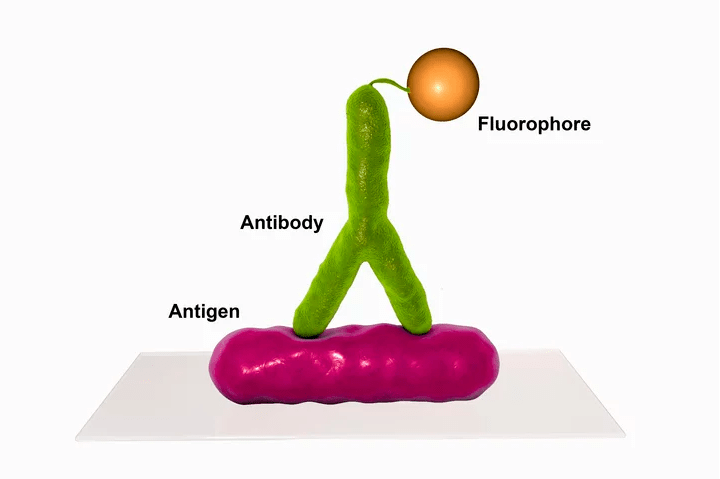The Enzyme Linked Immunosorbent Assay (ELISA) is a gold standard analytical method for the detection of various compounds, and is the most commonly used immunoassay technique for labs and research.

A lateral flow immunoassay is an easy-to-use and inexpensive paper-based device used to detect the presence of specific protein in fluid. The basic immunoassay works by taking advantage of the lock-and-key specificity of antibodies and their corresponding antigens. In the case of a lateral flow immunoassay the capture antibodies are printed onto a paper strip and the liquid moves across it via capillary action. The presence of the target antigen is detected by a colorimetric change on the strip of paper, which also makes the lateral flow assay an example of immunochromatography. The principle component of most immunochromatography devices is usually gold nanoparticles or an enzyme-conjugated bead; the gold nanoparticles have a red hue, and enzyme conjugated beads produce a colorful product when a substrate is introduced into the system. In both instances a positive test result is visible to the naked eye. Most lateral flow immunoassays are qualitative tests, which means that a color change on the test line indicates a positive result while the lack of color indicates a negative result. There is a significant amount of research invested in the development of quantitative lateral flow immunoassays in which numerical analysis of protein concentration is possible.
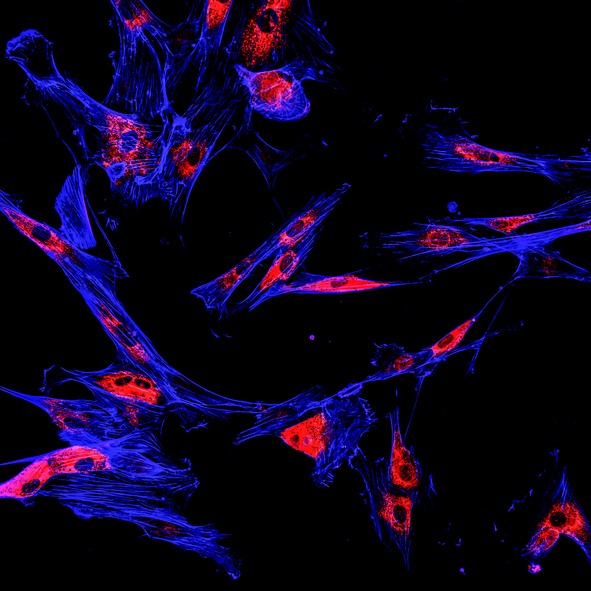
Fluorescent nanoparticle is a general term that many people assume means any nanoscale material that produces fluorescence upon excitation with incident light. However, there is actually a thing called a conjugated polymer nanoparticle (CPN) that is very different from the fluorescent dyes (think Alexa fluorophores) that many of us are used to. These CPNs produce higher intensity fluorescence than dyes (up to 1000x brighter!), are stable and much less susceptible to quenching, and don’t contain toxic cadmium like quantum dots. These conjugated polymer fluorescent nanoparticles will likely be at the forefront of future bioimaging methods.
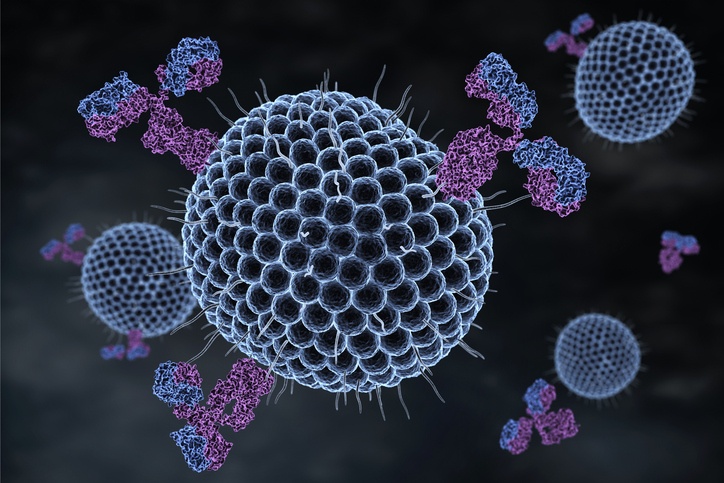
The concept of an antigen and antibody pair is central to modern medicine and biotechnology. These proteins match like a lock and key, with equisite specificity. The interactions are non-covalent, but have equilibrium constants ranging from 105 to 1012 M-1 Antibodies and antigens are proteins: polypeptide chains of amino acids. The IgG antibody is composed of four polypeptide chains, two heavy and two light, organized into a ‘Y’ shape. The base of the Y is called the Fc region, while the two tips are known as the Fab region.
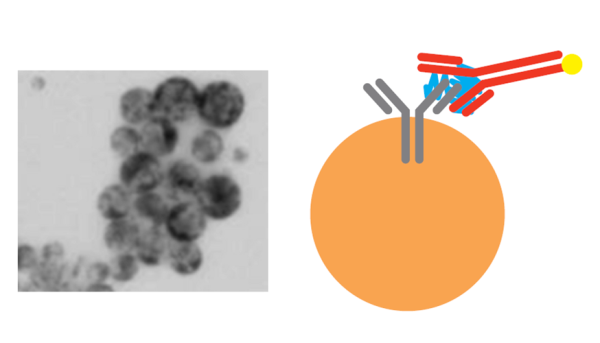
Chemiluminescent immunoassays (CLIAs) are excellent assays for high-throughput, low analyte concentration and time sensitive testing and isolation. Using coated magnetic beads, such as streptavidin beads, as the reagent in a CLIA is an easy and established technique favored among many clinical scientists.
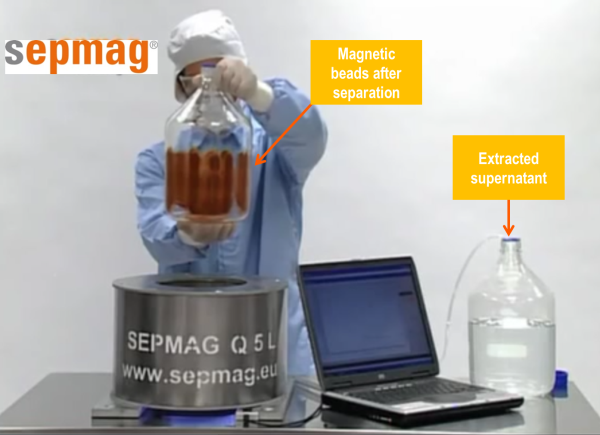
When scaling up a process using a traditional magnetic separation rack, the percentage of bead and biomolecule losses significantly increases with an increase in volume. One way of dealing with this problem is by applying a higher force at longer distances. But for this to work, you must apply this greater force without increasing the forces in the retention area during the magnetic separation process, in order to avoid irreversible aggregation.

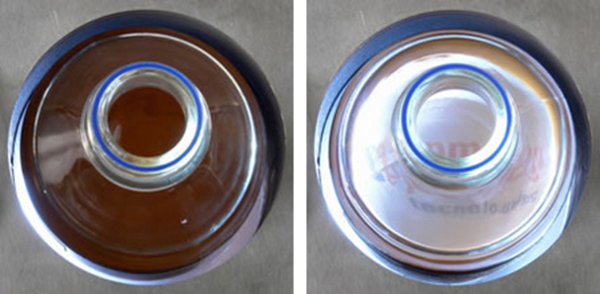
If one wants to scale up production from small lab lots to full-scale large lots, a non-homogenous magnetic separation process will result in lot-to-lot inconsistencies. Homogenous biomagnetic separation conditions, however, guarantee consistent results regardless of production scale.

Biomagnetic separation techniques are faster, cheaper and easier to use than non-magnetic techniques. In addition, when a magnetic separation process is performed under homogenous conditions, these techniques are also scalable and easily validated.
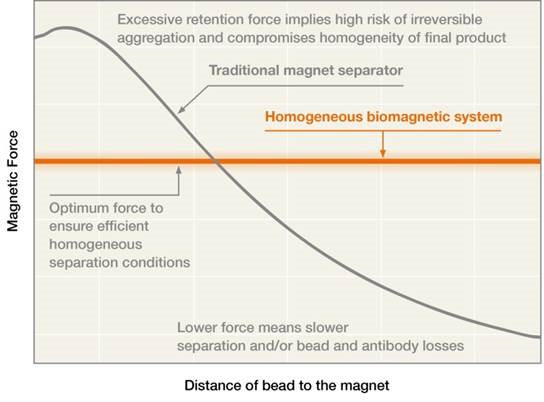
Due to the inherent properties of classic non-homogenous biomagnetic separators, beads can aggregate during the magnetic separation process. When this happens, technicians try to resolve the magnetic beads separation problem by using special resuspension techniques like the sonication method. But problems with resuspension can ultimately lead to end-product variability, especially if aggregation is not detected early.
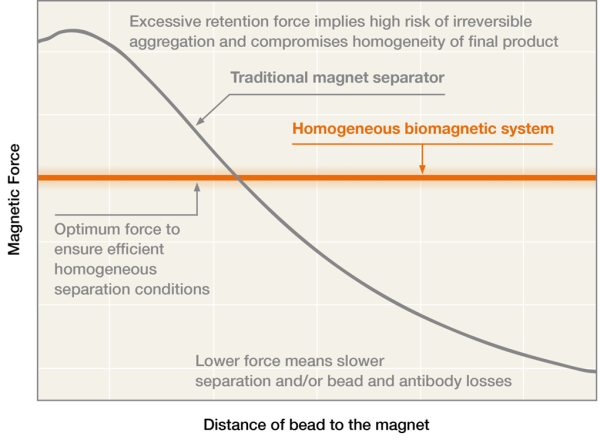
In-lot consistency is the key to reproducibility at the level of a kit. Unfortunately, in non-homogenous systems irreversible aggregation is one of the main sources of in-lot variability. If all of the beads are exposed to the same force as they are in homogenous magnetic systems, the risk of aggregation is greatly reduced. Because of this, it is important to know how to avoid irreversible aggregation problems during a magnetic separation process.
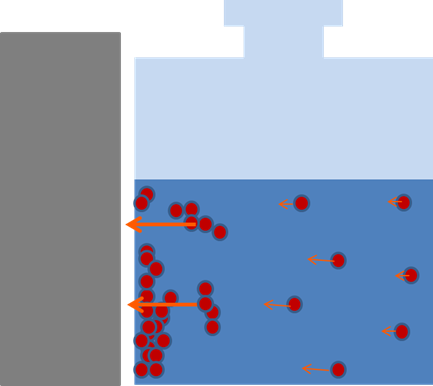
A recognized problem in the biomagnetic separation industry is that when one increases the batch size to scale up production of magnetic beads, the magnetic separation process time increases unproportionally to the increase in volume if one is working with standard magnetic separation devices.

When using biomagnetic separation, in order to ensure the consistency of the resulting product and the process itself, there must be some sort of validation procedure. Validation should be consistent within a given lot, from lot to lot and also when the process is scaled up. The validation procedure should optimally be related to the conditions of magnetic bead separation and not be dependent on any specific device that generates the magnetic field.

One of the biggest problems of producing magnetic beads when scaling up the production is that compared with smaller lot production, larger lot production seems to result in a much larger disproportionate loss of beads. This seems to happen even when the beads are produced in conditions that are similar to the small lot production in a magnetic separation process. The assumption is that when you scale up a process, you will have greater efficiency, but this does not happen when scaling up production of magnetic beads using classical separators.

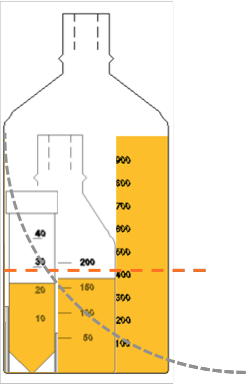
Biomagnetic separation used to take place in academic labs, but recently it has become a very industrial application. As processes are scaled up and volumes increase, the investment required for each batch is larger, but the expected economic return is also larger.
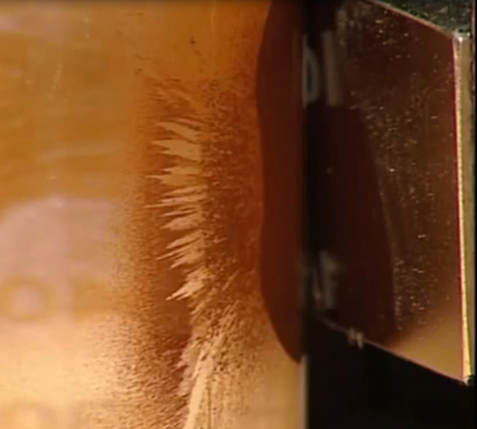
It is understandably important to end users that every kit within a particular lot have the same properties. In other words, when one is producing lots of material to be used in an IVD kit, one necessarily strives for maximum reproducibility and minimal variability. With standard magnetic separators, it is very difficult to achieve this goal in a magnetic separation process.

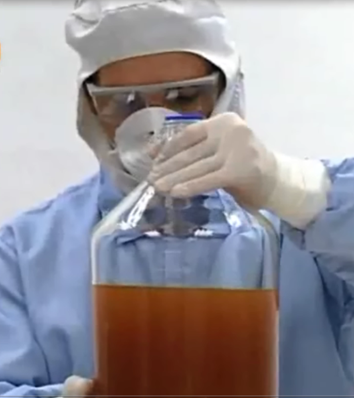
Because biomagnetic separation techniques are relatively simple, life science laboratories and industries are quite enamored with them. Indeed, using only magnetic beads and magnetic fields, biomolecules can be captured and extracted from complex media in magnetic bead separation. However, if this application is to be considered practical, it should also be faster than other separation technologies such as chromatography, electrophoresis or centrifugation.

What are the problems of the classic magnetic separation process? Typically the classic ways to produce magnetic bead reagents and kits are slow, very high maintenance and costly to run. The three classic techniques, centrifugation, filtration and tangential filtration, are not straightforward techniques.

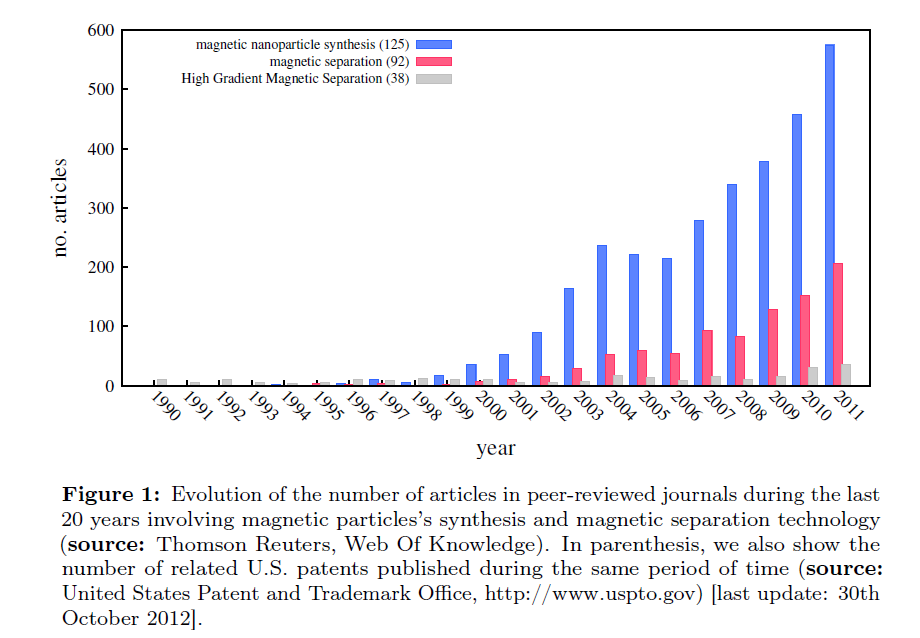
Last March 4th, Mr. Jordi Andreu Segura defended his paper “Statistical Mechanics of Superparamagnetic Colloidal Dispersions Under Magnetic Fields”, which was submitted to obtain a PhD degree in Materials Science at the Universidad Autónoma de Barcelona.

